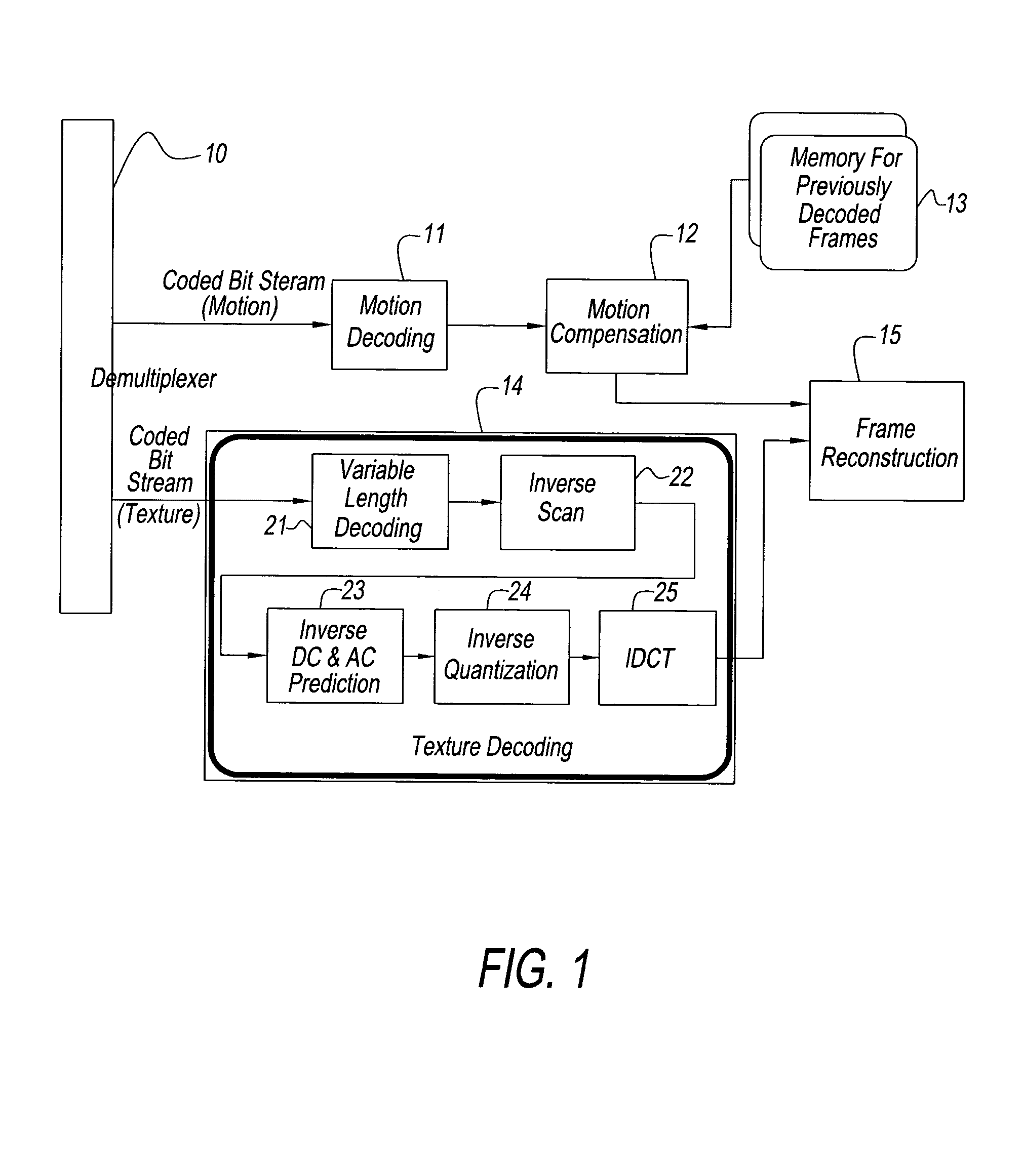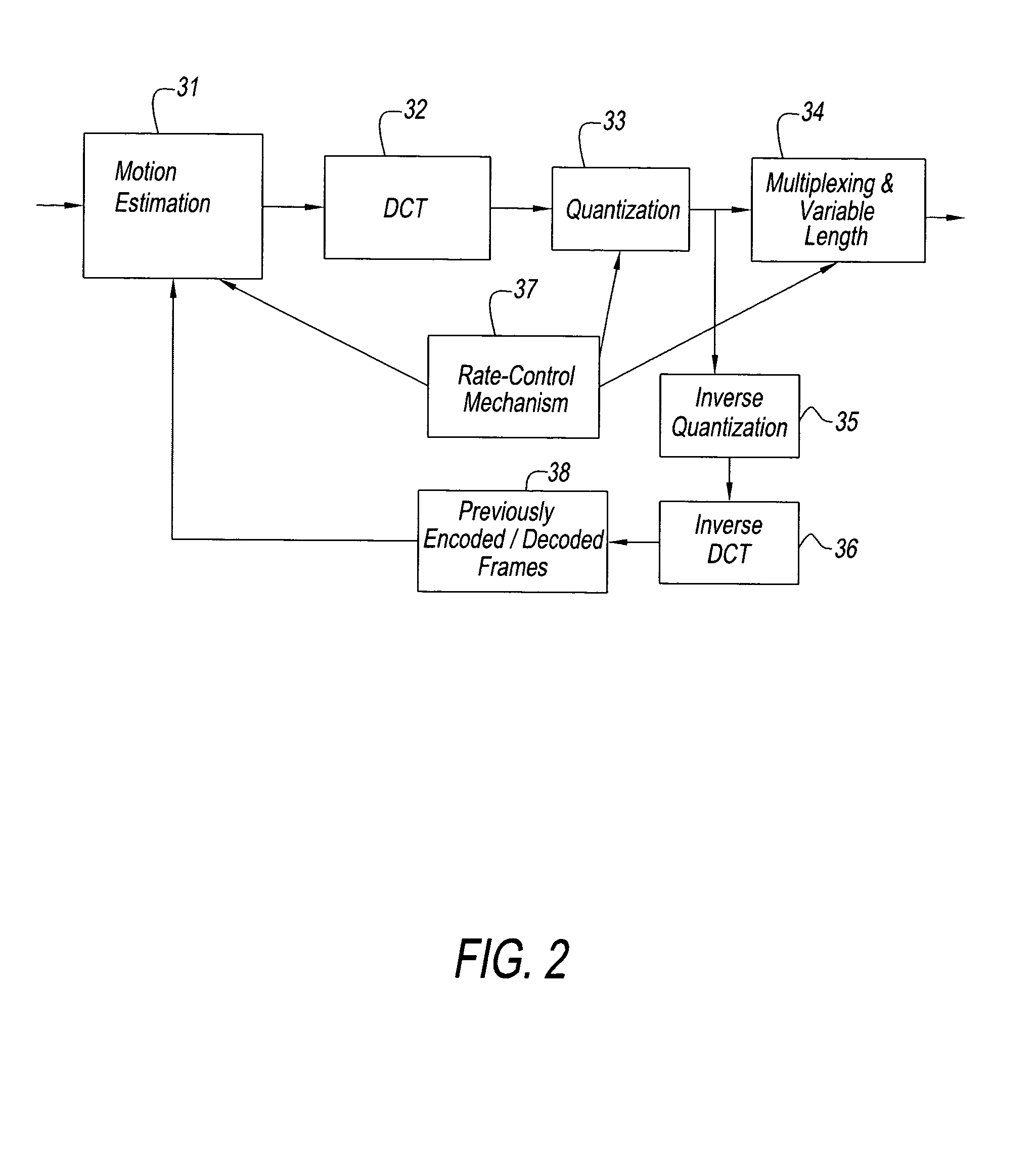Power-aware on-chip memory management for video coding algorithms
a video coding algorithm and power-aware technology, applied in the field of telecommunication, can solve the problems of increasing the complexity of multimedia algorithms, the difficulty of implementing multimedia algorithms on existing platforms, and the heavy price of accessing external memory, so as to reduce the amount of traffic to secondary, external, memory, and improve real-time performance. the effect of performance improvemen
- Summary
- Abstract
- Description
- Claims
- Application Information
AI Technical Summary
Benefits of technology
Problems solved by technology
Method used
Image
Examples
Embodiment Construction
[0030] Referring to FIGS. 3A, 3B and 3C the method of the preferred embodiment will be described. As shown in FIG. 1, block 12 of the prior art, Motion Compensation 12 uses a big amount of external memory for previously decoded frames storage, block 13. The general decoding scheme according to the disclosed method is the same as one of the FIG. 1 prior art. What is different is the way the operation of blocks or modules 12 and 13 is performed. As shown in FIG. 3A, to decode a current macro block 40 we utilize a motion vector 42 to bring into the temporary buffer 44 a reference macro block. This “copy” kind of operation is to be performed for each and every macro block, or more generally, block of video frame (further in the text ((macro) block).
[0031] The idea of the disclosed method is to use “internal” or “very close” video primary memory 45 as shown in FIG. 3C. This memory will hold recent (macro) blocks used in the process of motion compensation. The size of the memory 45 is re...
PUM
 Login to View More
Login to View More Abstract
Description
Claims
Application Information
 Login to View More
Login to View More - R&D
- Intellectual Property
- Life Sciences
- Materials
- Tech Scout
- Unparalleled Data Quality
- Higher Quality Content
- 60% Fewer Hallucinations
Browse by: Latest US Patents, China's latest patents, Technical Efficacy Thesaurus, Application Domain, Technology Topic, Popular Technical Reports.
© 2025 PatSnap. All rights reserved.Legal|Privacy policy|Modern Slavery Act Transparency Statement|Sitemap|About US| Contact US: help@patsnap.com



